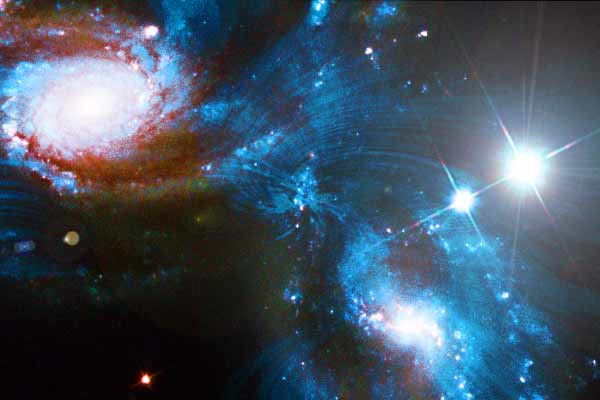
What If Our Solar System Had Formed Closer to the Milky Way's Edge?

During the new DC Comics Universe series "Flashpoint," in which a time-traveling supervillain alters the past to warp the present, Life's Little Mysteries presents a 10-part series that examines what would happen if a major event in the history of the universe had gone just slightly differently.
Part 10: What if . . . the solar system had formed closer to the Milky Way's edge?
Our solar system is located about two-thirds of the way out from the galactic center. Further toward the Milky Way's edge, "metallicity" – the percentage of elements heavier than the two lightest and most common, the gases hydrogen and helium – generally decreases. Heavier elements are the raw material for forming rocky bodies such as planets.
Life would be: Surprisingly, probably much the same — if it ever arose in the first place, that is.
Rocky Earth-like worlds should still develop in the Milky Way's outer rim, even though there is roughly one-third the amount of metallic elements as found in our sun's vicinity, said John Johnson, a professor of astronomy at the California Institute of Technology. These elements, however, comprise a small portion (about 1 percent) of the total starting stock for our solar system. So having two-thirds less would not translate into, say, insufficient calcium for organisms to build internal bones or shells — there would still be enough to go around.
But lower metallicity would spell doom for creating gas giants like Jupiter. These bodies are thought to begin as rocky cores . Through accretion of dust, then rocks, then boulders, and so on, they grow piecemeal to at least ten times the mass of Earth. The big planet's gravity traps stray gases, plumping up a massive atmosphere, generating stronger gravity yet. With fewer solid particles around, however, these cores take too long to form before available gases are scattered or drawn in by the fledgling solar system's star. [Why Does Saturn Have Rings? ]
In turn, the lack of an outer Jupiter-size planet could have profound effects on the habitability of inner rocky worlds. Jupiter has played the role of Earth's big brother, protecting us from bullies while also hitting us with the occasional spitball. Jupiter has shielded Earth from excessive, potentially life-killing impacts from distant comets . But computer simulations suggest Jupiter nudged some ice-containing asteroids from the mid-solar system Earth's way, delivering much of the water that became our oceans. Life as we know it, of course, needs water.
Sign up for the Live Science daily newsletter now
Get the world’s most fascinating discoveries delivered straight to your inbox.
At any rate, for a twin Earth in the Milky Way's far reaches, "civilizations that form there would look up and see less wanderers," Johnson told Life's Little Mysteries. The word "planet" comes from the Greek for "wandering star," and the ancients saw distant Jupiter and Saturn shining in the night sky only because the worlds are so large.
Previously: Would life exist if the forces that form molecules were slightly stronger (or weaker)?
- 6 Everyday Things that Happen Strangely in Space
- How Did Earth Get Its Name?
- Top 10 Questions About Earth
Head to Newsarama.com for complete Flashpoint coverage.










